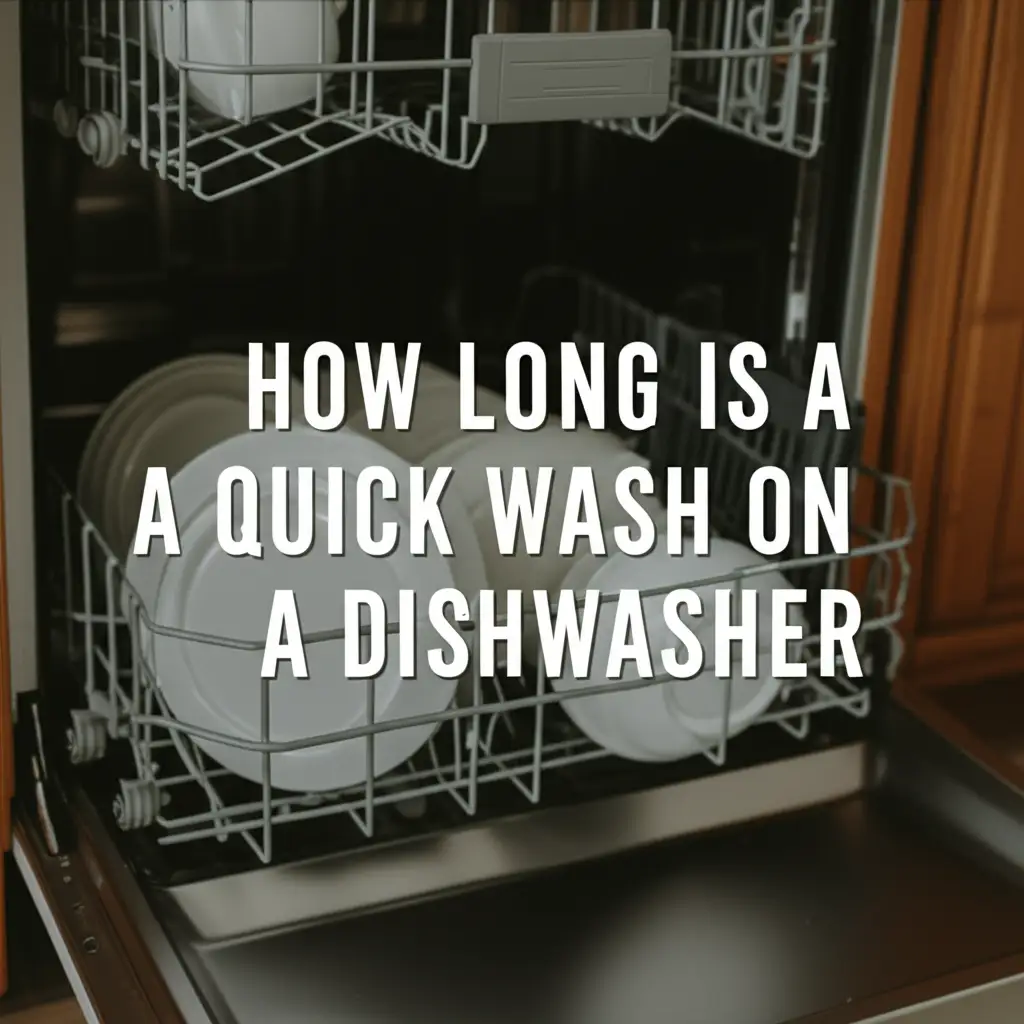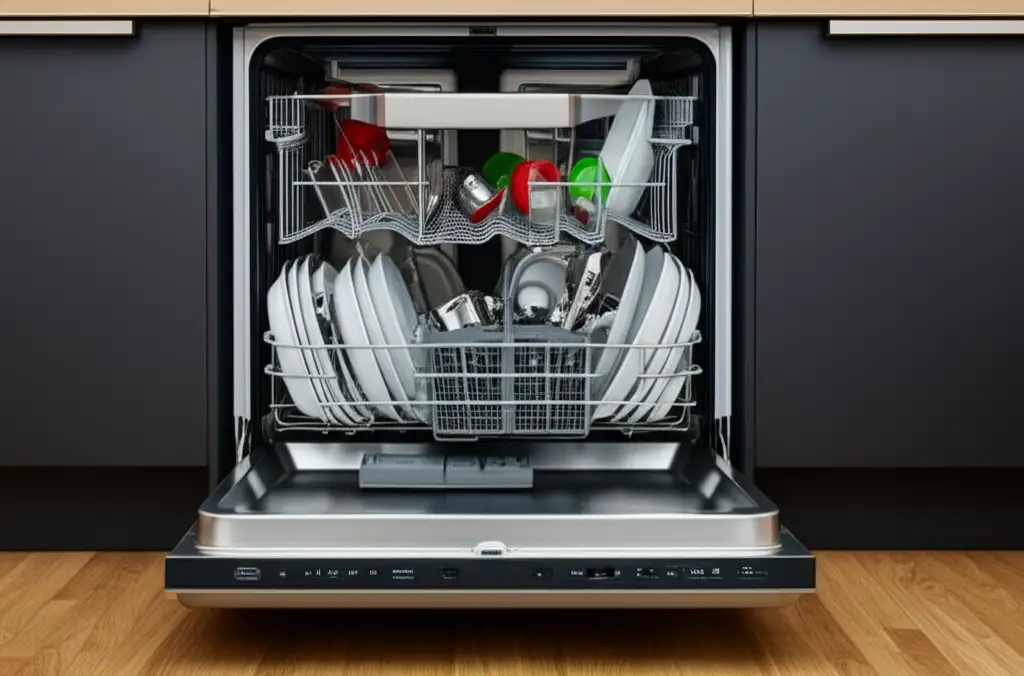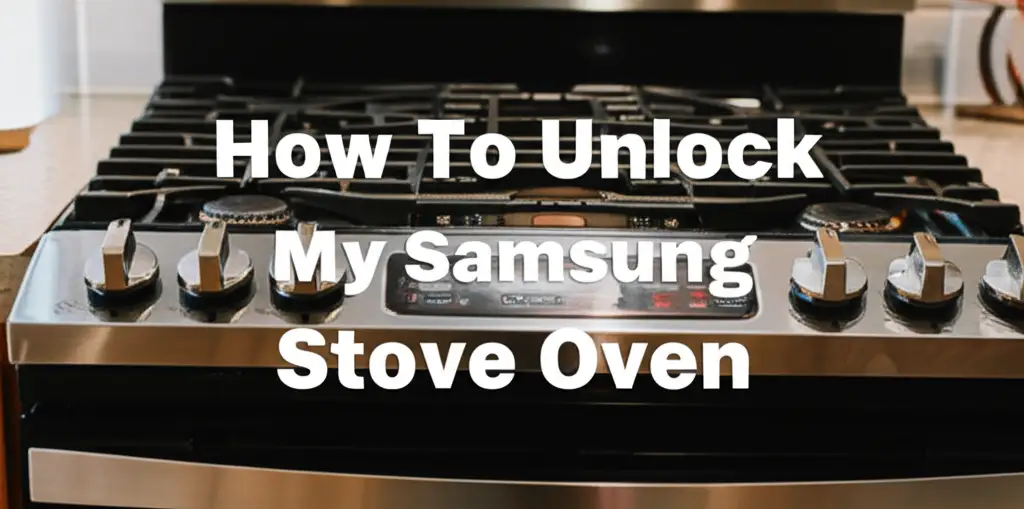· Mason Everett · Kitchen Appliances · 15 min read
How Long Is A Quick Wash On A Dishwasher

How Long Is A Quick Wash On A Dishwasher?
You often stand at your kitchen counter, staring at a pile of dishes. Dinner is done, and you need those plates clean fast. The quick wash setting on your dishwasher looks appealing. But what exactly does “quick” mean?
Many people wonder if this cycle is effective for all their dirty dishes. They ask about its duration and its ability to truly clean. I often get questions about how this cycle compares to others. We will explore how long a quick wash on a dishwasher typically lasts. We will also discuss when it is the right choice for your household.
Takeaway
- Quick wash cycles last 20 to 60 minutes.
- Time varies by brand, model, and soil sensor technology.
- Use quick wash for lightly soiled dishes or for rinsing.
- It may use more energy per cycle if water heating is fast.
- Optimal loading and proper detergent are key for good results.
A quick wash on a dishwasher usually lasts between 20 to 60 minutes. The exact time depends on the dishwasher brand, model, and the soil level of your dishes. This cycle focuses on speed, using higher water temperatures and stronger spray to clean lightly soiled items quickly. It often skips the drying phase to save more time.
Understanding the Quick Wash Cycle in Dishwashers
Many modern dishwashers have a quick wash cycle. This cycle helps clean dishes faster than normal options. It is perfect for times when you need dishes clean quickly. This cycle is also known as “Express Wash” or “Speed Wash” on different models.
This cycle uses hotter water and more powerful sprays. This helps remove food particles in a shorter time. It often skips or shortens the drying phase. This further reduces the total cycle time.
I find the quick wash cycle very useful for light loads. For example, after a small breakfast, I might have a few plates and glasses. They do not have stubborn food stuck on them. This is when the quick wash really shines. It gets them clean without a long wait.
However, it is important to know its limits. This cycle is not for heavily soiled pots and pans. It works best for items that only need a quick rinse or have fresh, light soil. Using it for very dirty dishes can lead to poor cleaning results. The shorter wash time simply cannot break down dried-on food effectively.
What Makes a Cycle “Quick”?
A quick wash cycle gets its speed from several factors. First, it uses hotter water than many standard cycles. Hot water helps detergents work faster. It also helps in breaking down food residues more quickly. Second, the cycle often has fewer rinses or shorter wash phases. This reduces the overall time significantly.
Additionally, the quick wash may use more water pressure. This helps to blast off loose food particles. Some quick wash cycles also skip the pre-rinse phase. This assumes that the dishes are not heavily soiled.
For example, a quick wash might skip the heated dry option. This means dishes come out wet. You might need to air dry them or towel dry them by hand. This trade-off saves time and some energy. It is important to know if your quick wash cycle uses less water. You can find more information about this at Does Quick Wash Use Less Water Dishwasher.
Factors Affecting Quick Wash Duration on Dishwashers
The duration of a quick wash cycle is not fixed. Many things can change how long it lasts. Knowing these factors helps you understand why your dishwasher behaves a certain way. I have seen different models behave very differently.
The brand and specific model of your dishwasher play a big role. A Bosch quick wash might be 30 minutes. A GE one might take 45 minutes. Each manufacturer designs its cycles with different priorities. Some aim for extreme speed. Others balance speed with better cleaning.
Soil sensor technology also affects the cycle length. Many newer dishwashers have sensors. These sensors detect how dirty your dishes are. If the sensor detects more soil, the quick wash might extend its duration slightly. It tries to ensure a better clean within the “quick” range. If the dishes are very clean, the cycle might finish even faster.
Water temperature is another key factor. Dishwashers often heat incoming water. The starting temperature of your home’s hot water supply matters. If your water heater provides very hot water, the dishwasher does not need to spend as much time heating it. This can shorten the cycle. If your water is cooler, the machine will take longer to reach the desired temperature.
The water pressure in your home also matters. Good water pressure ensures spray arms work effectively. It helps distribute water and detergent properly. Low water pressure can extend the wash time. The machine needs more time to fill or spray adequately.
Brand and Model Variations
Different brands have different design philosophies for their quick wash. For example, a high-end Miele might have a very sophisticated quick wash. It uses precise water jets and heating. A more basic model from another brand might use a simpler, fixed-time approach.
Some brands, like Frigidaire, might have specific cycle lengths for their standard washes. You can often check your manual to see How Long Is The Wash Cycle On A Frigidaire Dishwasher. This helps understand the typical duration of different cycles from that brand. These variations highlight the importance of consulting your appliance’s manual. It provides the most accurate information for your specific model.
Quick Wash vs. Other Dishwasher Cycles: A Comparison
Dishwashers offer many cycles, each designed for specific needs. The quick wash cycle stands out due to its speed. However, it is important to understand how it differs from other common cycles. This helps you choose the best option for your dishes.
The “Normal Wash” cycle is the most common. It balances cleaning power with energy efficiency. This cycle typically lasts 90 to 150 minutes. It is ideal for daily loads with mixed soil levels. It includes pre-washes, main washes, and rinse cycles. It also often includes a heated drying phase.
A “Heavy Duty” or “Pots and Pans” cycle is for heavily soiled items. This includes baked-on food or dried casserole dishes. These cycles are long, often lasting 2 to 4 hours. They use higher temperatures, more water, and extended wash times. They work to remove stubborn grime effectively. They are not designed for speed.
The “Eco Wash” or “Energy Saver” cycle focuses on efficiency. These cycles use less water and lower temperatures. They also take longer to wash dishes, sometimes 3 to 5 hours. The longer wash time allows detergents to work more slowly. This saves energy. You can learn more about this cycle at What Does Eco Wash Mean On Dishwasher. This cycle is best for lightly to moderately soiled dishes if you are not in a hurry.
When to Use Which Cycle
I use the quick wash when I have lightly soiled dishes. This means plates from breakfast or glasses from a drink. There is no stuck-on food. It is also good for quickly rinsing dishes before a party or big meal. This is when I need them clean in a hurry.
I choose the normal wash for most of my everyday loads. This includes dinner plates and regular cooking utensils. These items often have some food residue but are not extremely dirty. The normal cycle offers a good balance of cleaning and time.
The heavy-duty cycle is reserved for specific occasions. For example, after baking a lasagna or cooking a stew in a large pot. These items really need the extra power. They get a thorough clean with this cycle.
I use the eco wash when I am not in a rush and want to save energy. This is usually overnight or when I leave the house for several hours. The longer time does not bother me then. Knowing the differences helps me get the best results while managing time and energy.
Optimizing Your Dishwasher’s Quick Wash for Best Results
Using the quick wash cycle effectively requires a few considerations. Simply pressing the button does not guarantee sparkling dishes every time. I have learned some tricks that help. These methods ensure your quick wash truly cleans without wasting time or resources.
Proper loading of the dishwasher is crucial. Do not overcrowd the racks. Each dish needs space for water and detergent to reach it. Make sure spray arms can spin freely. Overlapping dishes can block water jets. This results in poorly cleaned areas. Dishes should face the center of the spray. This ensures maximum contact with water.
Use the correct amount and type of detergent. For quick wash cycles, many people use a full detergent pod. However, some quick cycles may work better with a slightly reduced amount for very light loads. Always use a high-quality detergent. It breaks down food residues faster. Liquid or gel detergents might dissolve more quickly in shorter cycles. This can give better results than hard-to-dissolve pods if your quick wash uses cooler water.
Pre-rinsing dishes can help, but it is not always necessary. For quick wash, a light pre-scrape is usually enough. Remove large food particles. You do not need to rinse plates completely clean. The quick wash is designed for light soil. Removing the big bits prevents clogging filters. It also allows the cycle to focus on the remaining grime.
Check your dishwasher’s user manual. It often has specific advice for using the quick wash cycle. Some manuals suggest only using it for glassware or specific types of dishes. Following these recommendations can improve performance.
Loading Tips for Quick Wash
- Avoid Overloading: Give dishes space.
- Face Spray: Position items to receive full water spray.
- No Blocking: Ensure spray arms spin without hitting items.
- Scrape, Don’t Rinse: Remove large food chunks.
Sometimes, certain items are perfect for a quick wash. For instance, if I’ve used my Instant Pot for a simple steamed dish, the pot itself is often just lightly soiled. I know I can safely clean it in the dishwasher. You can find more information about this at Can You Wash The Instant Pot In The Dishwasher. Similarly, silicone mats or even gas stove burners that only have light splatters can benefit from a quick cycle. You can also wash items like Can You Wash Silicone Mats In The Dishwasher and Can You Wash Gas Stove Burners In The Dishwasher with care. These items are generally robust and do not hold onto stubborn dirt in the same way as baked-on food.
Energy and Water Efficiency of Dishwasher Quick Wash Cycles
Many people assume a quick wash cycle always saves energy and water. This is not always true. The efficiency of a quick wash cycle depends on how your dishwasher operates. It also depends on what the cycle prioritizes. I have found this to be a common misconception.
A quick wash cycle typically uses less water than a normal or heavy-duty cycle. It has fewer rinse phases. This directly translates to lower water consumption. This is good for water conservation. This is especially true if you are in an area with water restrictions.
However, energy efficiency is more nuanced. Quick wash cycles heat water to a higher temperature faster. They also often use more powerful jets. This rapid heating and intense washing can sometimes use more electricity per cycle than a longer, more efficient cycle. An Eco Wash, for instance, heats water more slowly. It also extends the wash time. This uses less energy overall, even though it runs longer. The quick wash focuses on speed. It does not always prioritize energy savings.
Think about it this way: to clean fast, the machine needs to work harder in a short period. This often means more intensive heating and pumping. If you only have a few very lightly soiled dishes, a quick wash might be efficient. It avoids a long cycle for minimal dirt. But if your dishes are moderately dirty, a normal cycle might be more efficient. It cleans better without needing a second wash.
When Quick Wash Saves (and When It Doesn’t)
Quick wash saves energy when:
- Dishes are truly lightly soiled: You avoid running a full, longer cycle for a small amount of dirt.
- You air dry: If the quick wash skips the heated dry, you save the energy associated with the drying element.
- Your incoming water is already hot: The dishwasher spends less energy heating cold water.
Quick wash might not save energy when:
- Dishes are too dirty: You might need to re-run the cycle. This wastes more water and energy than a single normal cycle.
- It uses rapid, intense heating: Some models compensate for speed by rapidly heating water, which uses a burst of energy.
- You override air dry: If you manually select heated dry on a quick wash, you lose a major energy-saving component.
Understanding these trade-offs helps you make smarter choices. It ensures you use your dishwasher efficiently. It balances cleanliness with resource consumption.
Troubleshooting Common Quick Wash Dishwasher Issues
Sometimes, a quick wash cycle does not perform as expected. Dishes might not come out clean. The cycle might seem too long or too short. I have encountered these issues myself. Knowing how to troubleshoot helps get your dishwasher running smoothly again.
If dishes are still dirty after a quick wash, consider the soil level. The quick wash is for light messes. If you put in heavily soiled dishes, they will not get clean. Next time, try a normal or heavy-duty cycle for tougher grime. Also, check how you loaded the dishes. Overcrowding can block water and detergent from reaching all surfaces. Ensure spray arms are not blocked by tall items.
A quick wash cycle that seems too long can be frustrating. Modern dishwashers often have “soil sensors.” These sensors detect how dirty the water is. If your dishes are dirtier than expected for a quick wash, the sensor might extend the cycle. It tries to clean them better. This is why a 30-minute quick wash might turn into 40 minutes. Also, low water pressure can extend the fill time. This adds minutes to the cycle. Check your water supply.
If the quick wash cycle stops mid-cycle, it could be a power issue. Check if the dishwasher lost power. It might also be a sensor issue. Sometimes, opening the door mid-cycle can cause it to pause or reset. Close it firmly. If problems persist, consult your dishwasher manual for error codes. These codes provide specific details about the problem.
Using the right detergent for a quick wash also matters. Some detergents need longer exposure to hot water to activate fully. If your dishes are still dirty, try a different detergent. Ensure your detergent is fresh. Old detergent loses effectiveness.
Tips for Better Quick Wash Performance
- Scrape plates: Remove large food particles before loading.
- Do not overload: Give water space to circulate.
- Check water temperature: Ensure hot water supply is adequate.
- Use rinse aid: This helps with drying, even without heated dry.
- Clean dishwasher filters: Clogged filters reduce cleaning power.
If your dishwasher consistently underperforms on quick wash, it might be time for a deeper clean. Or, it might indicate a more serious issue. Always refer to your appliance manual. It contains specific troubleshooting steps for your model.
Maintaining Your Dishwasher for Optimal Quick Wash Performance
A well-maintained dishwasher performs better on all cycles, including quick wash. Regular maintenance keeps your machine efficient. It also helps avoid costly repairs. I make sure to do these steps often.
First, regularly clean the dishwasher filter. Food particles and grease collect here. A clogged filter reduces cleaning effectiveness. It can also make dishes come out dirty. Your manual shows you how to remove and clean it. This usually involves rinsing it under hot water. Sometimes, a brush is needed. I clean mine every few weeks, especially with frequent use.
Second, check the spray arms. Small holes in the spray arms can get clogged. Food bits or mineral deposits can block them. This reduces water spray. Use a toothpick or small wire to clear any blockages. Ensure the arms spin freely. They should not hit any items on the racks.
Third, descale your dishwasher periodically. Hard water leaves mineral deposits inside the machine. These deposits reduce heating efficiency. They also affect spray patterns. Use a dishwasher cleaner or white vinegar to descale. Place a bowl of white vinegar on the top rack. Run an empty hot cycle. This helps remove mineral buildup. Do this every few months, depending on your water hardness.
Fourth, wipe down the door seal. Food and grime can accumulate around the door gasket. This can lead to odors and poor sealing. Use a damp cloth to clean the seal. This prevents leaks and keeps the dishwasher smelling fresh.
Finally, do not forget to clean the dispenser for detergent and rinse aid. Sometimes, detergent residue can build up. This stops the dispenser from opening correctly. Rinse aid also needs to flow freely. Keep these areas clear.
Benefits of Regular Maintenance
- Improved cleaning results: Dishes get cleaner on every cycle.
- Longer appliance life: Your dishwasher lasts longer.
- Reduced energy costs: An efficient machine uses less power.
- Fewer repairs: Preventative care stops major problems.
- Odor control: A clean dishwasher smells better.
Proper maintenance ensures your quick wash cycle performs at its best. It delivers clean dishes when you need them most. It also helps you save time and frustration in the long run.
Conclusion
The quick wash on your dishwasher is a convenient and fast cleaning option. It typically lasts 20 to 60 minutes. This cycle is ideal for lightly soiled dishes and when you need items cleaned in a hurry. Understanding its purpose and limitations helps you use it effectively.
Remember that quick wash duration varies by brand, model, and the dirtiness of your dishes. While it saves water, its energy efficiency can be tricky. It may use more power for rapid heating. Always ensure proper loading and use the right detergent. This optimizes cleaning results. Regular maintenance of your dishwasher also plays a big role in its performance. This includes cleaning filters and spray arms.
By following these tips, you can master your dishwasher’s quick wash cycle. You will achieve sparkling clean dishes efficiently. Do you have a load of lightly used dishes ready for a speedy clean? Go ahead and press that quick wash button with confidence!





